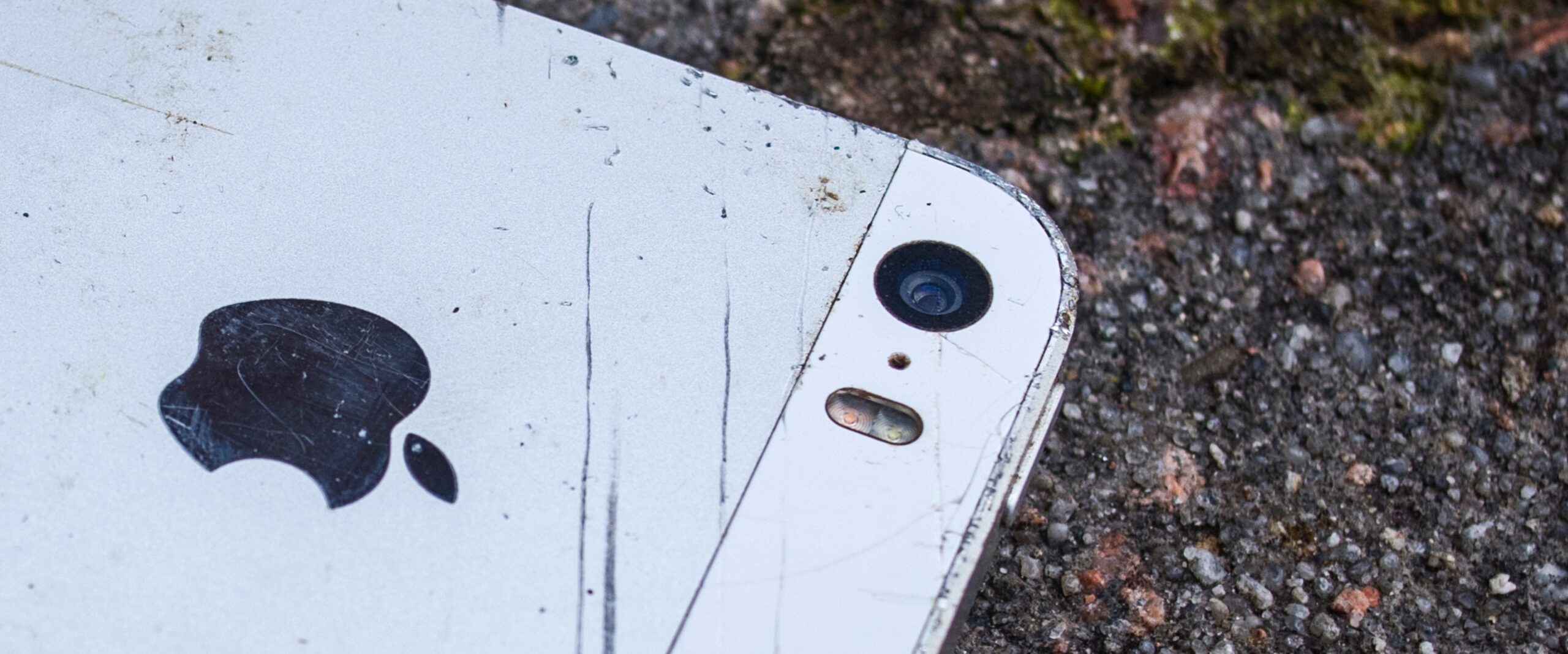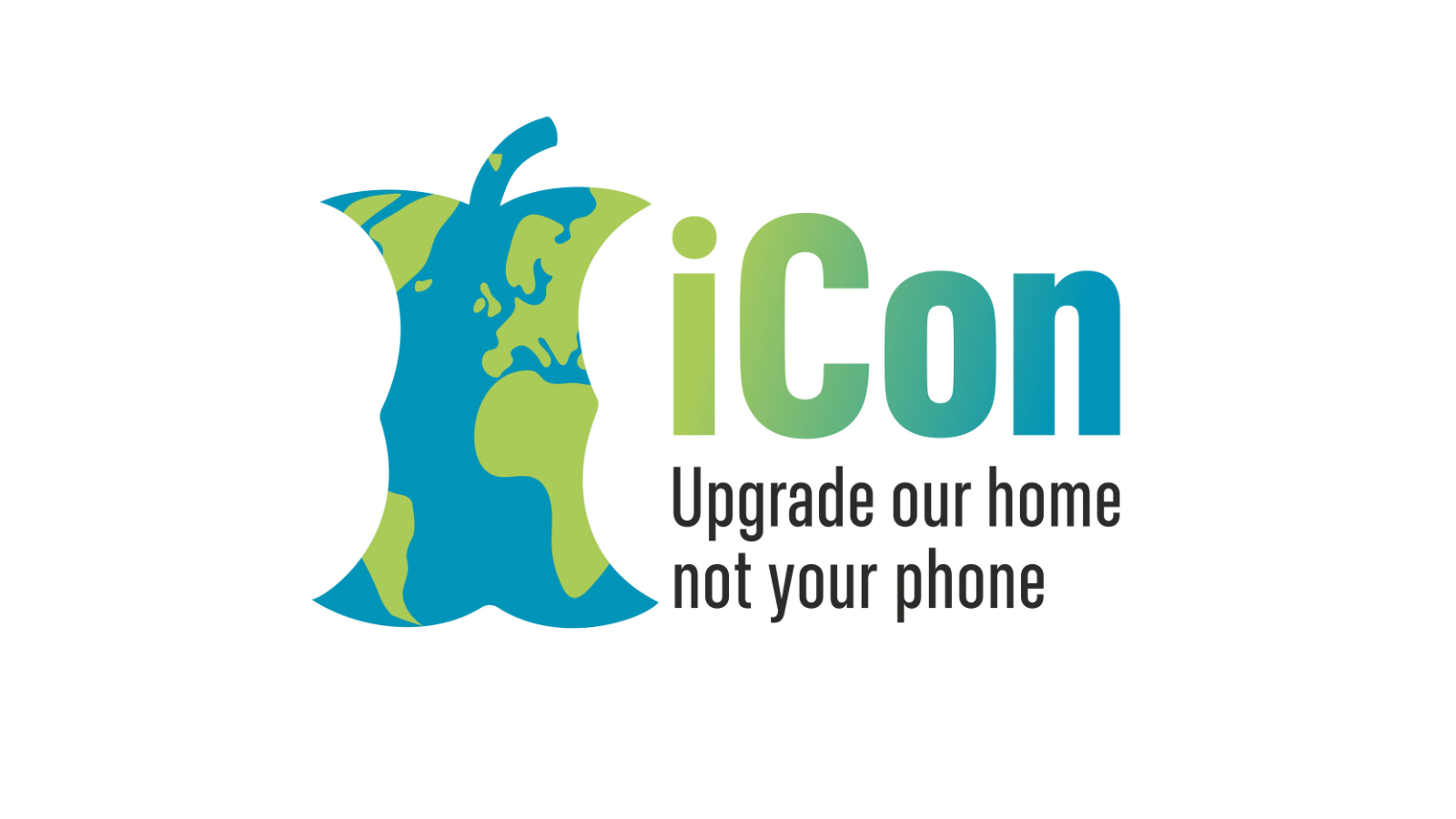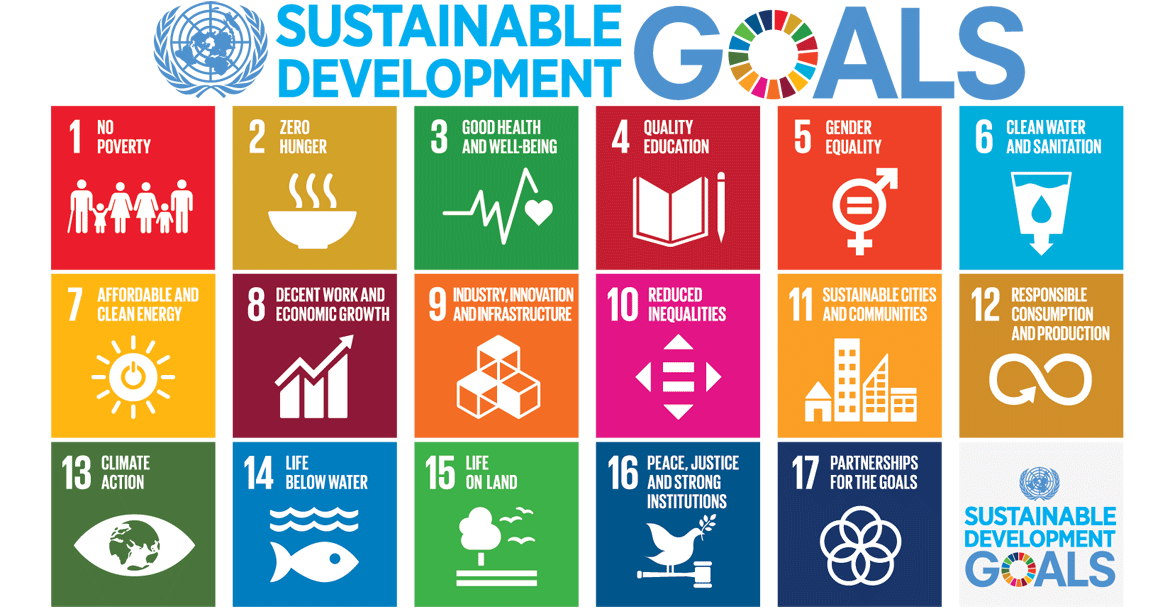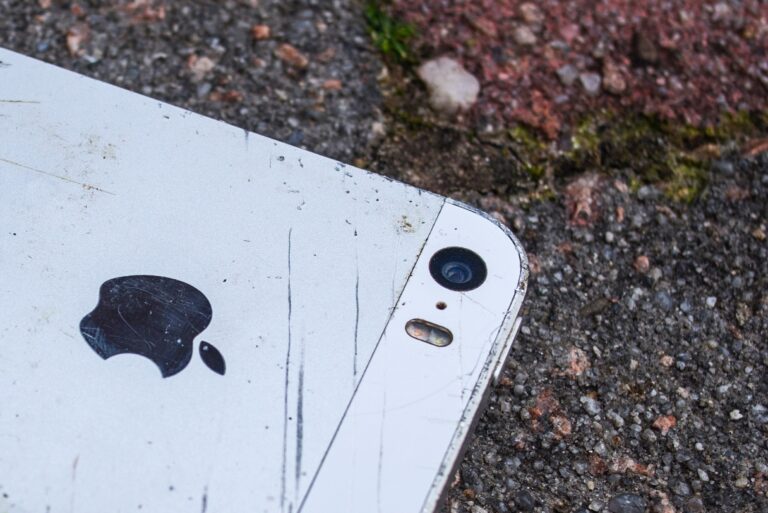
The real cost of an iPhone
Consuming more than our planet can provide drives the crisis we are in today. There are thought to be 16 billion smartphones on our planet – double the number of people. Our newly published report exposes how making, selling, using and discarding them harms our environment and how companies like Apple persuade us to buy more of them when the ones we have work perfectly well.
In 2021, we launched our We Don’t Buy It campaign, to challenge the levels of consumption that are driving the environmental crisis. The campaign’s name represents what it’s all about:
- We’re challenging the conventional wisdom that more stuff, more consumer activity and more economic growth are good for us,
- We’re encouraging those of us who already have enough to consume in ways that give our planet a chance,
- We’re confronting the social, economic and marketing pressures that encourage us all to buy more than the planet can afford.
The focus of our campaign so far is the #iCon – the needless replacement of things we already own because we’re persuaded something else is better. Apple’s annual iPhone “upgrades”, selling us marginally improved features as must-have lifestyle benefits is a perfect example.

The icon report
Published this week, iCon: Apple, consumption and the future of the planet is a 28-page report, which examines the evidence that excessive consumption is driving climate change, extinctions and exhaustion of resources. It goes on to detail how Apple persuades customers to buy more than one million iPhones every two days, and what the true environmental cost of production, marketing, distribution and, eventually, waste on such a scale is.
Among its findings are:
- At 23 million tonnes of CO2 equivalent, Apple’s carbon footprint is greater than that of 70 nation-states.
- The cost of a new iPhone could pay the salary of a midwife in Bangladesh for four months.
- While Apple promotes its work in making phones more durable and repairable, it continues to offer customers upgrade finance schemes encouraging them to buy new phones annually.
- Its estimated marketing spend of $2.7bn could meet all water needs for sanitation and hygiene in the 46 UN-designated least-developed countries.
- Apple’s supply chain uses more than 100 billion gallons of water a year: more than a third of its corporate use comes from areas at high water risk.
- The raw materials and components used in Apple products are extracted and transported from more than 75 countries.
- Less than a fifth of the materials in Apple products are recycled or renewable.
Real sustainability policies
Apple has some strong environmental policies and deserves credit for what it is doing. There is, however, simply no need for it to upgrade its phones every year – so far it has released 14 generations of iPhone and almost 40 different models. That upgrade cycle is driven by marketing rather than technology, and research shows that it makes us more likely to discard our old phones for new ones, even when they still function perfectly.
The improvements to phones are marginal and, as consumers, we must recognise that. For instance, there is a 6.7″ or 6.1″ Super Retina XDR ProMotion technology Always-On display on the iPhone 14 while the iPhone 13 has a 6.1″ or 5.4″ Super Retina XDR display. If we imagine that is important, we need a sense of perspective. CNET tech editor Sareena Dayaram provides one:
In India, the average person needs to save two months’
salary to buy the cheapest available smartphone,
according to a survey published by the Alliance for
Affordable Internet last August. From my perspective, the
trend of routinely upgrading a phone every two years
when it doesn’t change that much is a privilege, one that
reminds me of the stark income equality gap as well as
the ever-increasing digital divide globally.”
Apple also has a goal of being carbon neutral by 2030, but even its strong progress in reducing its carbon footprint so far must be put into perspective. As the report details, alternative energy and carbon offsetting schemes both have negative impacts. Meanwhile, Apple’s entire 127-page environment report for 2022, mentions biodiversity only four times.
While all else it is doing is important, Apple’s environmental plan simply does not consider that it could reduce its environmental impact most effectively by making and selling fewer products with longer lifespans. Reducing packaging with one hand and selling more packages with the other is not sustainable.
The big picture
Apple’s marketing power is dedicated to the simple goal of making more people buy more things. This runs in exactly the opposite direction to what is needed to protect our planet and our future.

The United Nations’ Sustainable Development Goals call for “Responsible consumption and production”, while the recently signed international agreement on protecting biodiversity calls for “significantly reducing overconsumption”
The report’s recommendations are directed at consumers, Apple and governments. They include:
For consumers – do not upgrade annually. Only replace your smartphone when it is no longer working properly.
For Apple – end the annual upgrade cycle and customer finance schemes which encourage the annual replacement of phones.
For governments – introduce policies which ensure you will exceed the targets of the Sustainable Development Goals and Convention on Biodiversity to cut consumption.
Take Action
Apple has the power to make a real difference. But change must go deeper than one company. In the concluding words of the report,
Just as with our individual choices, the behaviour
of companies is necessary but not sufficient to
change our world. We cannot rely on enlightened
decisions in boardrooms and corporate offices to
reconcile our demands with what the Earth can
provide. Unless those in power change the systems
and challenge the forces that sustain destruction,
we haven’t a prayer. Work is already being done to
model a better way and to identify and establish
pathways to a sustainable future. There are
no excuses.”



